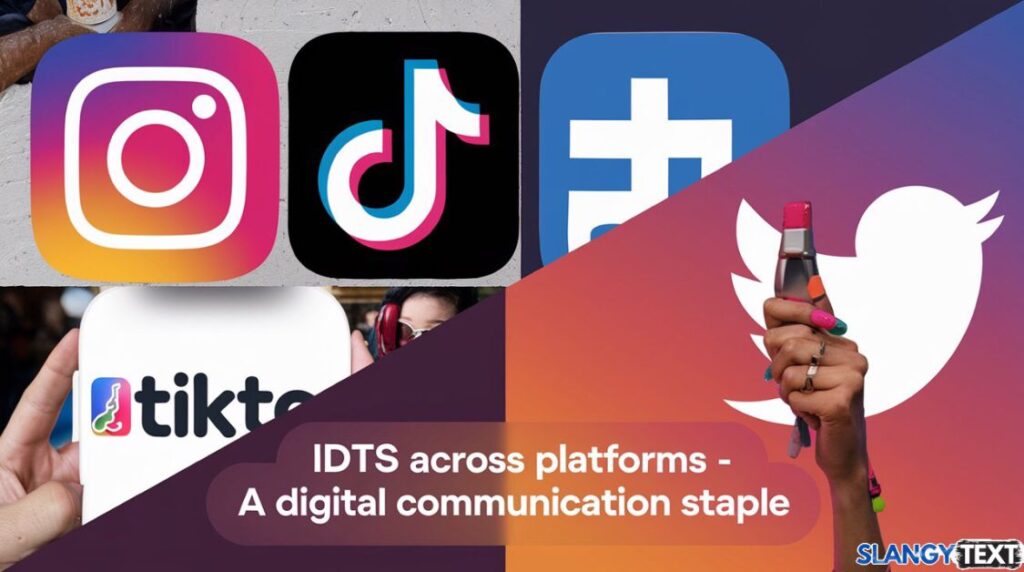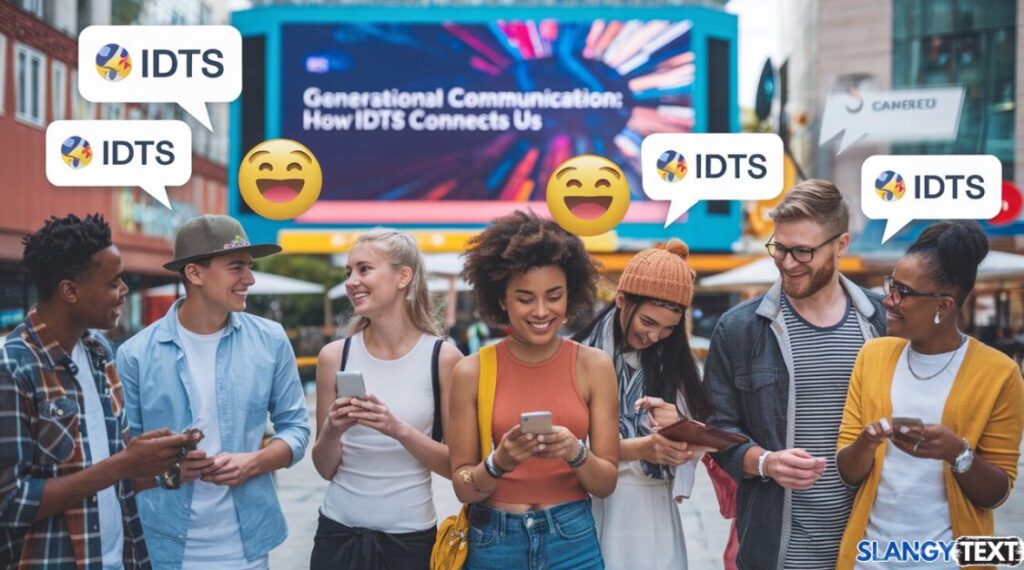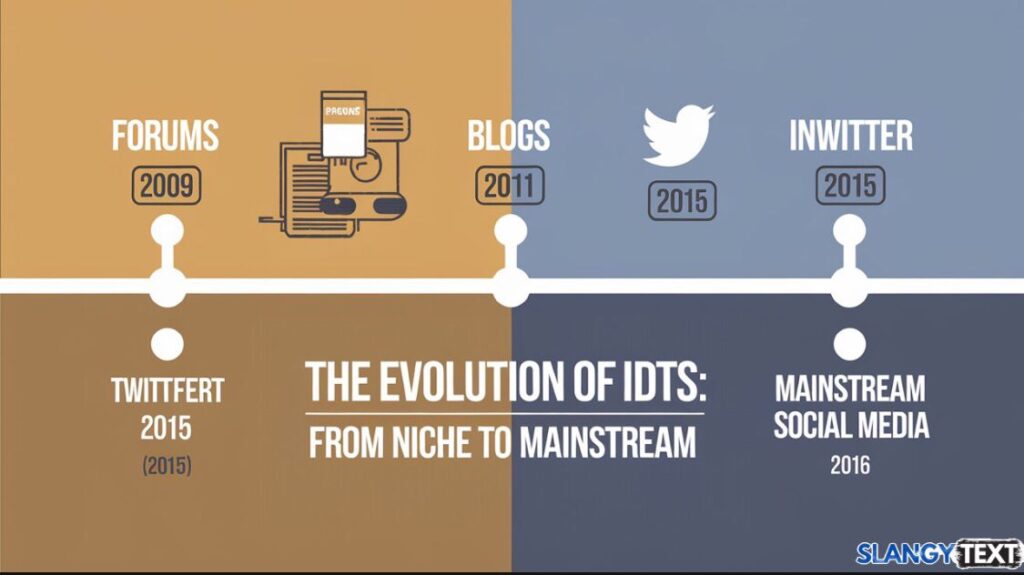In the evolving landscape of digital communication, the abbreviation “IDTS” has become increasingly common. This shorthand stands for “I don’t think so,” expressing doubt, disagreement, or uncertainty in casual conversations. The beauty of this abbreviation lies in its simplicity and versatility across various online platforms.
Real-World Usage Examples
Consider this typical exchange between two friends discussing weekend plans on Instagram. The following examples showcase how IDTS naturally fits into everyday conversations while maintaining clarity and context.
| Sender | Message | Context |
|---|---|---|
| Sarah Johnson | “Want to hit the beach tomorrow?” | Activity Suggestion |
| Michael Brown | “IDTS, weather looks bad” | Weather Concern |
| Emma Davis | “Movie night instead?” | Alternative Plan |
| James Wilson | “IDTS, got work” | Schedule Conflict |
| Rachel Thompson | “Brunch maybe?” | Second Alternative |
| David Martinez | “Perfect, count me in!” | Agreement |
| Ashley White | “IDTS, budget tight” | Financial Concern |
| Christopher Lee | “Netflix party?” | Digital Alternative |
| Jessica Taylor | “IDTS, seen everything” | Content Issue |
| Daniel Anderson | “Board games at my place?” | Final Suggestion |
Platform Usage Evolution
The term has gained significant traction across multiple social media platforms. From Instagram stories to TikTok comments, IDTS has become a staple in online communication. Its widespread adoption in chatrooms and forums demonstrates its versatility. The evolution of this abbreviation reflects the broader trends in digital communication, where efficiency meets clarity.

The beauty of IDTS lies in its adaptability across different platforms while maintaining its core meaning. Whether used in professional emails or casual social media posts, the context helps shape its interpretation and impact. This versatility has contributed to its staying power in the digital lexicon.
Must visit : What Does gng Mean in Texting (With Examples)
Social Media Context Examples
The following table illustrates how IDTS is used across various social media platforms, showcasing its adaptability in different online contexts.
| Platform | User | Message Example |
|---|---|---|
| @lisa_miller | “IDTS gonna make it to the concert 😢” | |
| TikTok | @ryan_smith | “New trend? IDTS worth trying” |
| Snapchat | @emily_jones | “IDTS this filter looks good” |
| @kevin_wright | “IDTS the game ends here” | |
| @amanda_clark | “Party tonight? IDTS feeling well” | |
| Discord | @tyler_brown | “IDTS that’s the right strategy” |
| @sophia_garcia | “IDTS we need extra supplies” | |
| @jacob_wilson | “IDTS the deadline is flexible” | |
| @olivia_martin | “IDTS that’s the correct source” | |
| YouTube | @ethan_davis | “IDTS this video is fake” |
Context and Usage Guidelines
Understanding the proper context for using IDTS in digital communication is crucial. This text shorthand works best in casual conversation settings where informal language is appropriate. The key lies in matching the message context to the relationship between communicators.
The effectiveness of IDTS often depends on the existing relationship between the communicators and the overall tone of the conversation. In professional settings, it’s essential to gauge the appropriateness of using such abbreviations, considering factors like company culture and recipient preferences.
Professional vs Casual Usage

Understanding when to use IDTS versus its more formal alternatives can make a significant difference in how your message is received. The following table provides a comprehensive comparison of formal and casual approaches.
| Situation | Formal Response | Casual Alternative |
|---|---|---|
| Meeting Request | “I don’t believe that time works for me” | “IDTS can make it” |
| Project Deadline | “I’m not confident we can meet that timeline” | “IDTS we’ll finish by then” |
| Budget Approval | “I don’t think this fits our current budget” | “IDTS we have the budget rn” |
| Team Availability | “I’m uncertain about team capacity” | “IDTS everyone’s free” |
| Client Meeting | “That proposal might not be suitable” | “IDTS that’ll work” |
| Resource Allocation | “Those resources may not be available” | “IDTS we have enough” |
| Strategy Discussion | “I have reservations about this approach” | “IDTS that’s the way” |
| Performance Review | “There might be room for improvement” | “IDTS that’s your best” |
| Travel Plans | “That schedule appears problematic” | “IDTS I can travel then” |
| Equipment Request | “That might not be necessary” | “IDTS we need that” |
Also like to know this : WBY Meaning
Impact on Modern Communication
The integration of IDTS into everyday digital discourse has significantly influenced how we express disagreement or uncertainty in online spaces. This evolution reflects broader changes in communication elements and messaging trends. As digital natives continue to shape language norms, understanding these changes becomes increasingly important for effective communication.
The impact extends beyond mere convenience, affecting how we build and maintain relationships in digital spaces. The ability to quickly and clearly express doubt or disagreement while maintaining a conversational tone has become invaluable in our fast-paced digital world.
Generational Communication Patterns

Different age groups tend to use IDTS in varying ways, reflecting broader generational communication preferences. This understanding helps bridge communication gaps across age groups and professional settings.
| Age Group | Communication Style | IDTS Usage Pattern |
|---|---|---|
| Gen Z | Ultra casual, emoji-heavy | “IDTS bestie 😭” |
| Millennials | Casual but context-aware | “IDTS tbh” |
| Gen X | Mixed formal/informal | “IDTS – will explain later” |
| Baby Boomers | More formal, full phrases | “I don’t think so…” |
| Teen Users | Highly informal, trendy | “IDTS fr fr” |
| Young Professionals | Context-dependent style | “IDTS – checking schedule” |
| Middle Management | Professional-casual mix | “IDTS at this time” |
| Senior Executives | Primarily formal | “I don’t believe so” |
| Social Media Influencers | Platform-specific style | “IDTS fam 👀” |
| Digital Nomads | Global casual style | “IDTS atm” |
Communication Elements Impact
The effectiveness of IDTS in messaging trends depends on understanding various communication elements. This internet terminology has evolved to become more than just an online abbreviation – it’s now an integral part of modern communication.
Understanding the nuanced ways IDTS can be interpreted helps prevent miscommunication while maintaining efficiency in digital conversations. The tone and context in which IDTS is used can significantly impact its reception and effectiveness.
Also like to know this : What Does Casi-Algo Mean?
Tone Variations Through Context
The following examples demonstrate how the same abbreviation can carry different emotional weights depending on the context and surrounding message.
| Tone | Example Message | Response |
|---|---|---|
| Friendly | “You’re coming tonight?” | “IDTS, feeling sick 😷” |
| Professional | “Report ready by 5?” | “IDTS – need more time” |
| Casual | “Pizza for dinner?” | “IDTS, had it yesterday” |
| Concerned | “Everything okay?” | “IDTS, rough day ahead” |
| Excited | “Won the lottery?!” | “IDTS, spam email prob” |
| Skeptical | “This deal real?” | “IDTS, looks suspicious” |
| Disappointed | “Plans cancelled?” | “IDTS can fix this now” |
| Hopeful | “Weather improving?” | “IDTS until next week” |
| Worried | “Deadline extended?” | “IDTS boss approved” |
| Curious | “New phone model?” | “IDTS worth the upgrade” |
Historical Context and Evolution
The journey of IDTS through the late 2000s showcases its remarkable evolution in internet culture. Google Trends data reveals interesting patterns in its usage history, reflecting the dynamic nature of internet slang. This evolution mirrors the broader changes in how we communicate in the digital age.

Understanding this historical context helps appreciate how language adapts to technological changes and social needs. The abbreviation’s journey from niche internet forums to mainstream communication channels illustrates the dynamic nature of digital language evolution.
Usage Timeline Examples
Tracking the evolution of IDTS across different platforms provides insight into changing communication patterns and platform preferences.
| Year | Platform | Trending Usage |
|---|---|---|
| 2008 | Forums | “IDTS this meme will last” |
| 2010 | MySpace | “IDTS she’s online anymore” |
| 2012 | “IDTS the party’s happening” | |
| 2014 | “IDTS this trend catches on” | |
| 2016 | “IDTS filter works right” | |
| 2018 | Snapchat | “IDTS story posted properly” |
| 2020 | TikTok | “IDTS dance goes viral” |
| 2021 | Discord | “IDTS server stays up” |
| 2022 | BeReal | “IDTS post was authentic” |
| 2024 | Threads | “IDTS platform survives” |
Regional and Cultural Impact
The adoption of IDTS varies significantly across different English-speaking regions, reflecting local communication styles and cultural preferences. This variation adds another layer of complexity to digital communication, especially in global contexts.
Understanding these regional differences helps communicate more effectively with diverse audiences. Cultural sensitivity in using abbreviations like IDTS can enhance cross-cultural communication and prevent misunderstandings.
Regional Usage Patterns
| Region | Common Usage | Cultural Context |
|---|---|---|
| US West Coast | “IDTS gonna happen” | Casual, tech-influenced |
| US East Coast | “IDTS at this time” | More formal approach |
| British Usage | “IDTS mate” | Distinctly British casual |
| Australian Style | “IDTS hey” | Relaxed communication |
| Canadian Format | “IDTS sorry” | Politely diplomatic |
| Urban Areas | “IDTS rn fam” | Street-smart casual |
| Rural Regions | “IDTS actually” | Traditional approach |
| Corporate Settings | “IDTS per review” | Business formal |
| Academic Context | “IDTS based on data” | Scholarly tone |
| Social Media | “IDTS bestie” | Ultra-casual style |
Preventing Digital Misunderstandings
Understanding regional variations and maintaining communication clarity helps prevent confusion. The key lies in considering the individual interpretation and following proper online etiquette. Clear communication becomes especially important when using abbreviations across different cultural and professional contexts.
Common Misinterpretation Scenarios
The following examples highlight potential misunderstandings and how to avoid them through clearer communication.
| Sender | Message | Clarification Needed |
|---|---|---|
| William Turner | “IDTS works for me” | Schedule conflict or disinterest? |
| Isabella Rodriguez | “IDTS about that” | Uncertainty or disagreement? |
| Benjamin Foster | “Meeting today? IDTS” | Not available or not scheduled? |
| Ava Thompson | “IDTS we discussed this” | Forgotten or never happened? |
| Mason Phillips | “Project done? IDTS” | In progress or not started? |
| Sophie Anderson | “IDTS that’s right” | Wrong information or unsure? |
| Lucas Mitchell | “Party tonight? IDTS” | Can’t attend or cancelled? |
| Grace Wilson | “Deadline today? IDTS” | Extended or misremembered? |
| Oliver Davis | “IDTS that’s allowed” | Policy unclear or personal choice? |
| Emma Martinez | “Submit now? IDTS” | Not ready or wrong timing? |
Alternative Expressions and Variations
While IDTS serves as a quick way to express doubt or disagreement, various alternatives exist depending on the context and desired tone. Understanding these variations enhances message meaning and promotes better online interaction. The choice of expression can significantly impact how your message is received and interpreted.
Musr visit : OTW Mean
Expression Alternatives
Different situations call for different levels of formality and clarity in expressing doubt or disagreement.
| Formal Setting | Casual Setting | Context |
|---|---|---|
| “I’m not certain” | “IDTS tbh” | General Uncertainty |
| “That may not be accurate” | “IDTS fam” | Friendly Correction |
| “I have doubts about that” | “IDTS rn” | Timing Issues |
| “Not necessarily” | “IDTS ngl” | Honest Opinion |
| “That’s questionable” | “IDTS fr” | Strong Doubt |
| “I beg to differ” | “IDTS tho” | Polite Disagreement |
| “That’s debatable” | “IDTS imho” | Personal View |
| “I’m not convinced” | “IDTS tbf” | Fair Assessment |
| “That’s not my understanding” | “IDTS imo” | Personal Perspective |
| “I respectfully disagree” | “IDTS nvm” | Changing Topic |
This comprehensive guide to understanding IDTS in digital communication showcases its versatility and importance in modern conversation. Whether used in professional settings or casual chats, understanding its proper usage helps maintain clear and effective communication across all digital platforms. As our digital communication continues to evolve, staying informed about such linguistic developments becomes increasingly important for meaningful online interactions.

Kayla Rogers is a writer at Slangy Text who loves exploring modern acronyms & slangs and how they shapes our conversations. She enjoys sharing fun and interesting articles that connect with readers. When she’s not writing, Kayla likes to keep up with the latest trends or relax with a good book.







